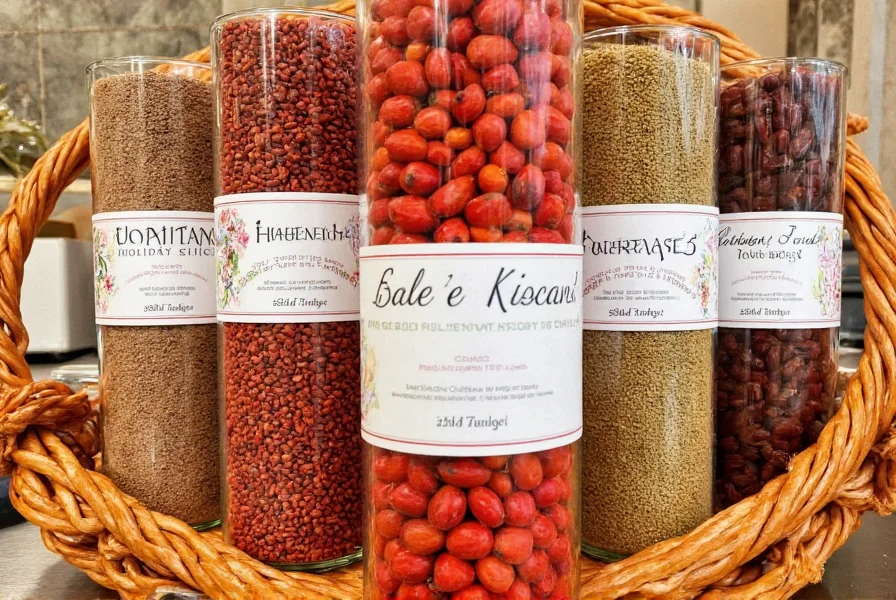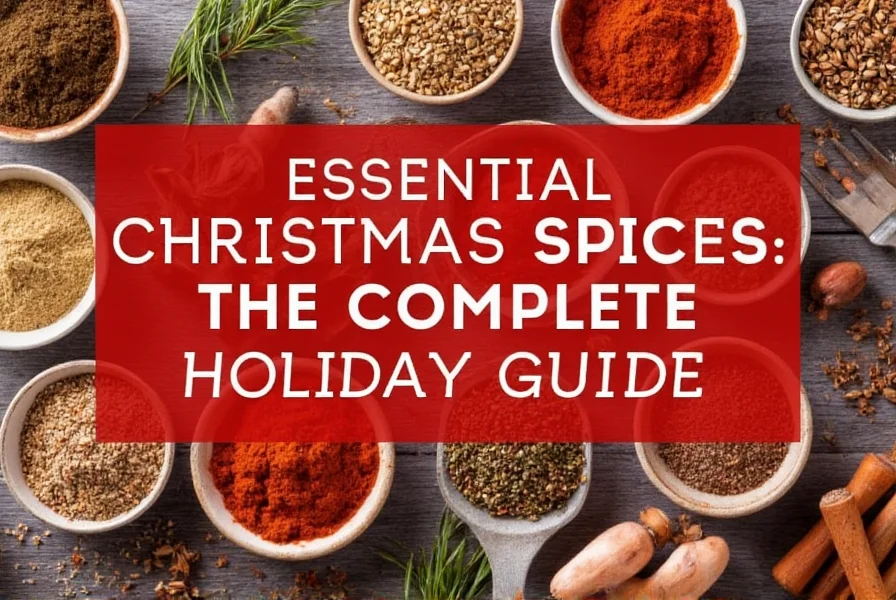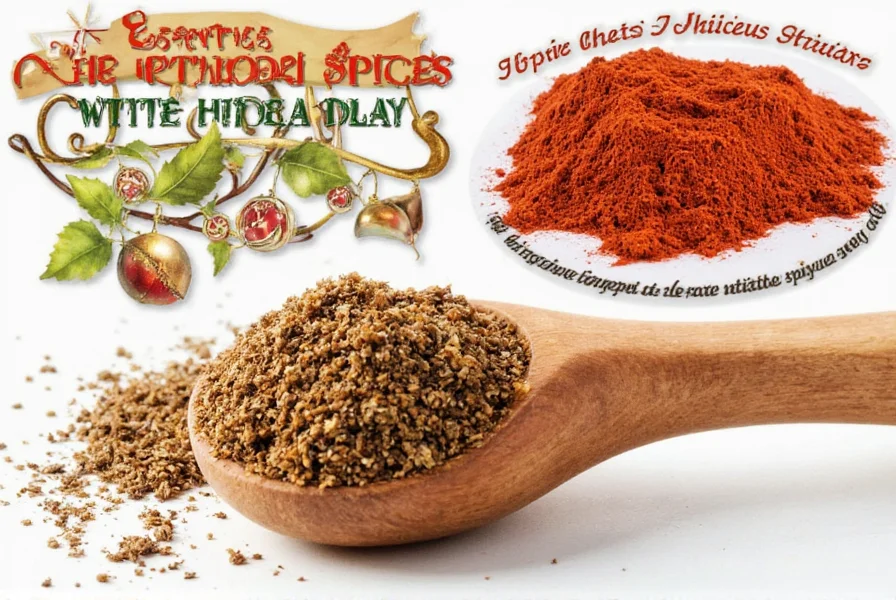These aromatic ingredients form the foundation of countless holiday traditions worldwide. Understanding which spices define the Christmas season and how to use them properly can transform your festive cooking from ordinary to extraordinary. Let's explore the essential spices that create that unmistakable holiday aroma filling homes during the winter months.
The Essential Christmas Spice Blend
The traditional Christmas spice combination, often called "pumpkin pie spice" in some regions, actually predates modern pie traditions by centuries. This warming blend typically consists of five key spices that work synergistically to create that signature holiday flavor profile:
| Spice | Flavor Profile | Traditional Christmas Uses |
|---|---|---|
| Cinnamon | Warm, sweet, woody | Gingerbread, mulled wine, apple pie, cookies |
| Nutmeg | Earthy, nutty, slightly sweet | Eggnog, mashed potatoes, custards, spice cakes |
| Ginger | Pungent, spicy, slightly sweet | Gingerbread men, ginger snaps, spice cookies |
| Cloves | Intense, sweet, peppery | Ham glazes, mulled wine, spiced cider, pickling |
| Allspice | Complex blend of cinnamon, nutmeg, and cloves | Christmas cakes, fruitcakes, Caribbean-inspired holiday dishes |
Individual Spice Profiles and Uses
Cinnamon: The Heart of Holiday Baking
Cinnamon reigns supreme among Christmas spices, with its sweet, woody aroma instantly evoking holiday memories. The best cinnamon for Christmas baking comes from Ceylon varieties, which offer a more delicate flavor than the more common Cassia cinnamon. When using cinnamon in holiday recipes, remember that freshly ground sticks provide significantly more flavor than pre-ground powder. This essential spice features prominently in traditional German lebkuchen, Swedish pepparkakor, and classic American pumpkin pie.

Nutmeg: The Secret Weapon in Holiday Drinks
Freshly grated nutmeg transforms ordinary holiday beverages into extraordinary experiences. Unlike pre-ground versions, freshly grated nutmeg releases volatile oils that create a more complex, aromatic experience essential for authentic eggnog and mulled wine. Many professional chefs recommend keeping a whole nutmeg and microplane grater near the stove during December for instant flavor enhancement. This versatile spice also elevates savory holiday dishes like mashed potatoes and creamed spinach.
Ginger: From Ancient Remedy to Modern Favorite
Ginger's journey from ancient medicinal remedy to Christmas staple spans continents and centuries. The spice's warming properties made it particularly valuable during cold winter months, explaining its prominence in holiday traditions. For the most vibrant flavor in gingerbread cookies and other Christmas treats, combine both ground ginger and freshly grated ginger root. The fresh version provides bright, citrusy notes while the dried version offers deeper, more complex warmth.
Historical Significance of Christmas Spices
The tradition of using specific spices during Christmas has deep historical roots. During medieval Europe, spices were incredibly valuable commodities, often worth their weight in gold. Wealthy families would display their status by using generous amounts of these precious ingredients in their holiday feasts. The specific combination of warming spices became associated with Christmas because they were believed to have medicinal properties that could combat winter illnesses.
The spice trade routes that connected Europe with Asia directly influenced which spices became traditional for Christmas celebrations. Cinnamon from Sri Lanka, nutmeg from the Banda Islands, and cloves from Indonesia traveled thousands of miles to reach European markets, making them special enough to reserve for the most important holiday of the year.
Creating Your Own Christmas Spice Blends
While store-bought spice blends offer convenience, creating your own custom Christmas spice mixture allows for personalized flavor profiles. The basic ratio for a traditional Christmas spice blend is:
- 4 parts cinnamon
- 2 parts nutmeg
- 2 parts ginger
- 1 part cloves
- 1 part allspice
For a more complex blend, consider adding cardamom (½ part) or mace (¼ part). When making your own blend, toast the whole spices in a dry skillet over medium heat until fragrant before grinding. This simple step dramatically enhances the aromatic compounds and creates a more vibrant flavor profile for your holiday baking.
Proper Storage for Maximum Freshness
Many home bakers don't realize that spices lose potency quickly when improperly stored. For optimal flavor in your Christmas cooking, follow these storage guidelines:
- Store spices in airtight containers away from light and heat
- Buy whole spices whenever possible and grind them fresh
- Replace ground spices every 6 months and whole spices annually
- Keep spices away from the stove where temperature fluctuations degrade quality
Consider investing in dark glass or metal containers specifically designed for spice storage. The small additional cost pays dividends in the quality of your holiday baking. For the best results in traditional Christmas recipes, always use freshly ground spices rather than pre-ground versions.
Traditional Christmas Recipes Featuring Signature Spices
Certain holiday dishes simply wouldn't be the same without their characteristic spice profiles. German lebkuchen relies on a complex blend of at least seven spices, including cardamom and coriander in addition to the standard Christmas blend. Swedish glögg (mulled wine) traditionally uses a combination of cinnamon sticks, cardamom pods, and whole cloves simmered with raisins and almonds.
In the American South, sweet potato casserole gets its distinctive flavor from a generous amount of cinnamon and nutmeg, while New England's famous pumpkin pie features a balance of ginger, cloves, and allspice. Understanding which spices define these regional specialties helps preserve authentic holiday flavors.

Conclusion: Embracing the Essence of Christmas Through Spices
The distinctive aroma of Christmas spices does more than just flavor our favorite holiday foods—it connects us to centuries of tradition and creates powerful sensory memories. By understanding the individual characteristics of each spice and how they work together, you can elevate your holiday cooking from ordinary to extraordinary. Whether you're baking cookies for neighbors, preparing the main course for Christmas dinner, or mixing a batch of mulled wine, these time-honored spices will infuse your celebrations with authentic holiday spirit.
What is the traditional Christmas spice blend called?
The traditional Christmas spice blend doesn't have one universal name but is commonly referred to as "pumpkin pie spice" in North America, though this is somewhat of a misnomer as the blend predates pumpkin pie's popularity. In Europe, it's often simply called "baking spice" or "Christmas spice mix." The classic combination typically includes cinnamon, nutmeg, ginger, cloves, and allspice in varying proportions.
How can I make my own Christmas spice blend at home?
To make your own Christmas spice blend, combine 4 parts ground cinnamon, 2 parts ground nutmeg, 2 parts ground ginger, 1 part ground cloves, and 1 part ground allspice. For best results, toast whole spices in a dry skillet until fragrant before grinding them fresh. Store your blend in an airtight container away from light and heat, and use within six months for optimal flavor in your holiday baking and cooking.
Which Christmas spices work best in beverages like mulled wine?
For authentic mulled wine and other holiday beverages, whole spices work best as they release flavor more gradually. Cinnamon sticks, whole cloves, and cardamom pods are essential, with orange peel and fresh ginger adding complementary notes. Nutmeg is particularly important for eggnog—always use freshly grated rather than pre-ground for the most aromatic results. Remember to strain out the whole spices before serving your beverages.
How long do Christmas spices stay fresh for holiday baking?
Ground Christmas spices typically remain at peak freshness for about 6 months when stored properly in airtight containers away from light and heat. Whole spices last significantly longer—up to 1-2 years—because their essential oils remain protected within the intact spice. For the most vibrant flavors in your holiday baking, purchase spices in small quantities just before the Christmas season and grind whole spices fresh as needed for each recipe.











 浙公网安备
33010002000092号
浙公网安备
33010002000092号 浙B2-20120091-4
浙B2-20120091-4